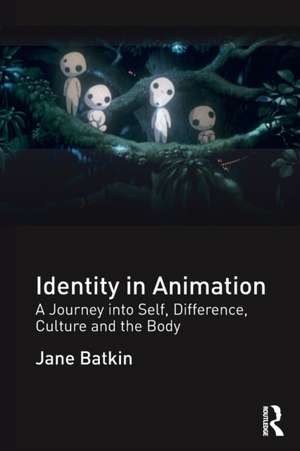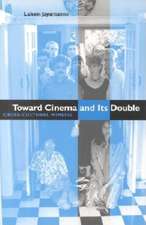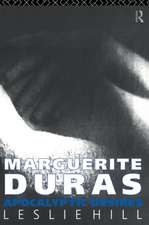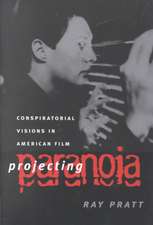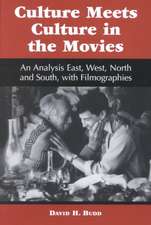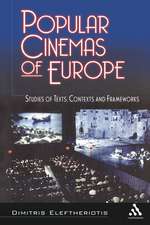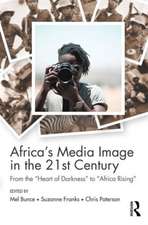Identity in Animation: A Journey into Self, Difference, Culture and the Body
Autor Jane Batkinen Limba Engleză Paperback – 14 feb 2017
Jane Batkin explores how identity politics shape the inner psychology of the character and their exterior motivation, often buoyed along by their questioning of ‘place’ and ‘belonging’ and driven by issues of self, difference, gender and the body. Through this, Identity in Animation illustrates and questions the construction of stereotypes as well as unconventional representations within American, European and Eastern animation. It does so with examples such as the strong gender tropes of Japan’s Hayao Miyazaki, the strange relationships created by Australian director Adam Elliot and Nick Park’s depiction of Britishness. In addition, this book discusses Betty Boop’s sexuality and ultimate repression, Warner Bros’ anarchic, self-aware characters and Disney’s fascinating representation of self and society.
Identity in Animation is an ideal book for students and researchers of animation studies, as well as any media and film studies students taking modules on animation as part of their course.
| Toate formatele și edițiile | Preț | Express |
|---|---|---|
| Paperback (1) | 348.51 lei 6-8 săpt. | |
| Taylor & Francis – 14 feb 2017 | 348.51 lei 6-8 săpt. | |
| Hardback (1) | 875.13 lei 6-8 săpt. | |
| Taylor & Francis – 14 feb 2017 | 875.13 lei 6-8 săpt. |
Preț: 348.51 lei
Nou
Puncte Express: 523
Preț estimativ în valută:
66.69€ • 69.63$ • 55.19£
66.69€ • 69.63$ • 55.19£
Carte tipărită la comandă
Livrare economică 05-19 aprilie
Preluare comenzi: 021 569.72.76
Specificații
ISBN-13: 9781138849785
ISBN-10: 1138849782
Pagini: 192
Ilustrații: 76
Dimensiuni: 156 x 234 x 16 mm
Greutate: 0.27 kg
Ediția:1
Editura: Taylor & Francis
Colecția Routledge
Locul publicării:Oxford, United Kingdom
ISBN-10: 1138849782
Pagini: 192
Ilustrații: 76
Dimensiuni: 156 x 234 x 16 mm
Greutate: 0.27 kg
Ediția:1
Editura: Taylor & Francis
Colecția Routledge
Locul publicării:Oxford, United Kingdom
Public țintă
Postgraduate and UndergraduateCuprins
Introduction
1 The boop-oop-a-doop girl: culture, body and Betty Boop
2 Disney: self, patriarchy and punishment
3 Conflict and connection, body and performance: how Looney Tunes broke out of the asylum
4 The case for Wallace and Gromit: Britishness, horror, slapstick and the real
5 Who am I? Gender at play: guys in corsets, girls in love
6 The misfits: bodies, difference and wandering in the Clayography films of Adam Elliot
7 Hayao Miyazaki: place, nostalgia and adolescence
8 The ‘thingness’ of CG and the life of the object
Conclusion
1 The boop-oop-a-doop girl: culture, body and Betty Boop
2 Disney: self, patriarchy and punishment
3 Conflict and connection, body and performance: how Looney Tunes broke out of the asylum
4 The case for Wallace and Gromit: Britishness, horror, slapstick and the real
5 Who am I? Gender at play: guys in corsets, girls in love
6 The misfits: bodies, difference and wandering in the Clayography films of Adam Elliot
7 Hayao Miyazaki: place, nostalgia and adolescence
8 The ‘thingness’ of CG and the life of the object
Conclusion
Recenzii
‘With Identity in Animation, Jane Batkin offers us an illuminating look into the ways that a character can be seen to incorporate ideas of self, the nation, and culture, while reminding us that our understanding of a character is influenced by the physicality of animation combined with our notions of personality.’
Amy Davis, Lecturer in Film and Television Studies, University of Hull, UK
‘Combining textual analysis and interview, Batkin provides a welcome reason to revisit the likes of Betty Boop, Bugs Bunny, Princess Mononoke, and many others, considering afresh their significance as identifying markers of personal, cultural, and industrial change. Essential reading for anyone interested in animation, identity politics, and social history.’
Chris Pallant, Senior Lecturer in Film and Digital Media, Canterbury Christ Church University, UK
Amy Davis, Lecturer in Film and Television Studies, University of Hull, UK
‘Combining textual analysis and interview, Batkin provides a welcome reason to revisit the likes of Betty Boop, Bugs Bunny, Princess Mononoke, and many others, considering afresh their significance as identifying markers of personal, cultural, and industrial change. Essential reading for anyone interested in animation, identity politics, and social history.’
Chris Pallant, Senior Lecturer in Film and Digital Media, Canterbury Christ Church University, UK
Descriere
Identity in Animation: A Journey into Self, Difference, Culture and the Body uncovers the meaning behind some of the most influential characters in the history of animation and questions their unique sense of who they are and how they are formed.
Jane Batkin explores how identity politics shape the inner psychology of the character and their exterior motivation, often buoyed along by their questioning of ‘place’ and ‘belonging’ and driven by issues of self, difference, gender and the body. Through this, Identity in Animation illustrates and questions the construction of stereotypes as well as unconventional representations within American, European and Eastern animation. It does so with examples such as the strong gender tropes of Japan’s Hayao Miyazaki, the strange relationships created by Australian director Adam Elliot and Nick Park’s depiction of Britishness. In addition, this book discusses Betty Boop’s sexuality and ultimate repression, Warner Bros. anarchic, self-aware characters, and Disney’s fascinating representation of self and society.
Identity in Animation is an ideal book for students and researchers of animation studies, as well as any media and film studies students taking modules on animation as part of their course.
Jane Batkin explores how identity politics shape the inner psychology of the character and their exterior motivation, often buoyed along by their questioning of ‘place’ and ‘belonging’ and driven by issues of self, difference, gender and the body. Through this, Identity in Animation illustrates and questions the construction of stereotypes as well as unconventional representations within American, European and Eastern animation. It does so with examples such as the strong gender tropes of Japan’s Hayao Miyazaki, the strange relationships created by Australian director Adam Elliot and Nick Park’s depiction of Britishness. In addition, this book discusses Betty Boop’s sexuality and ultimate repression, Warner Bros. anarchic, self-aware characters, and Disney’s fascinating representation of self and society.
Identity in Animation is an ideal book for students and researchers of animation studies, as well as any media and film studies students taking modules on animation as part of their course.
